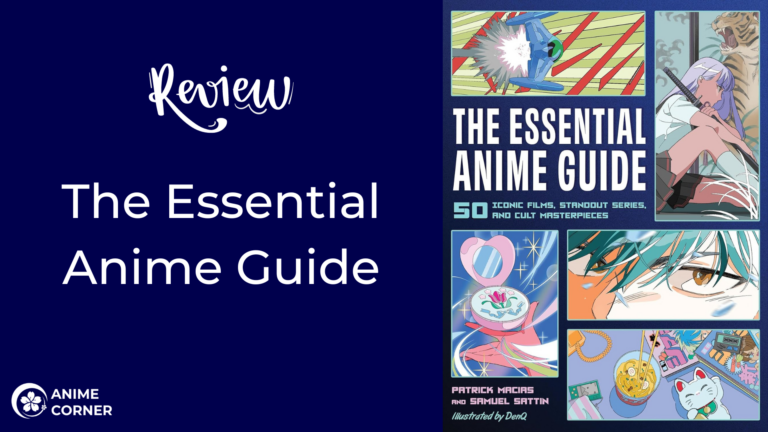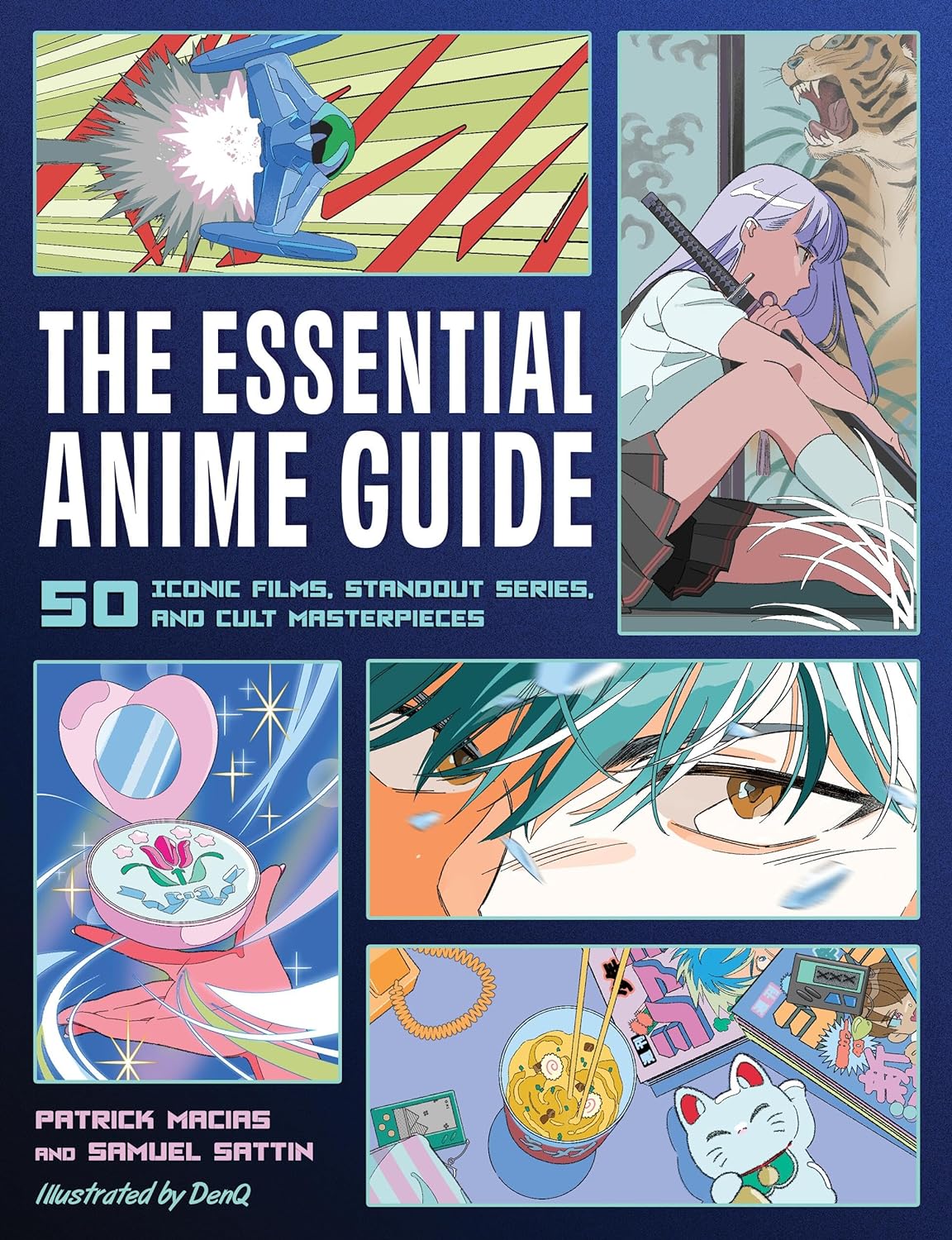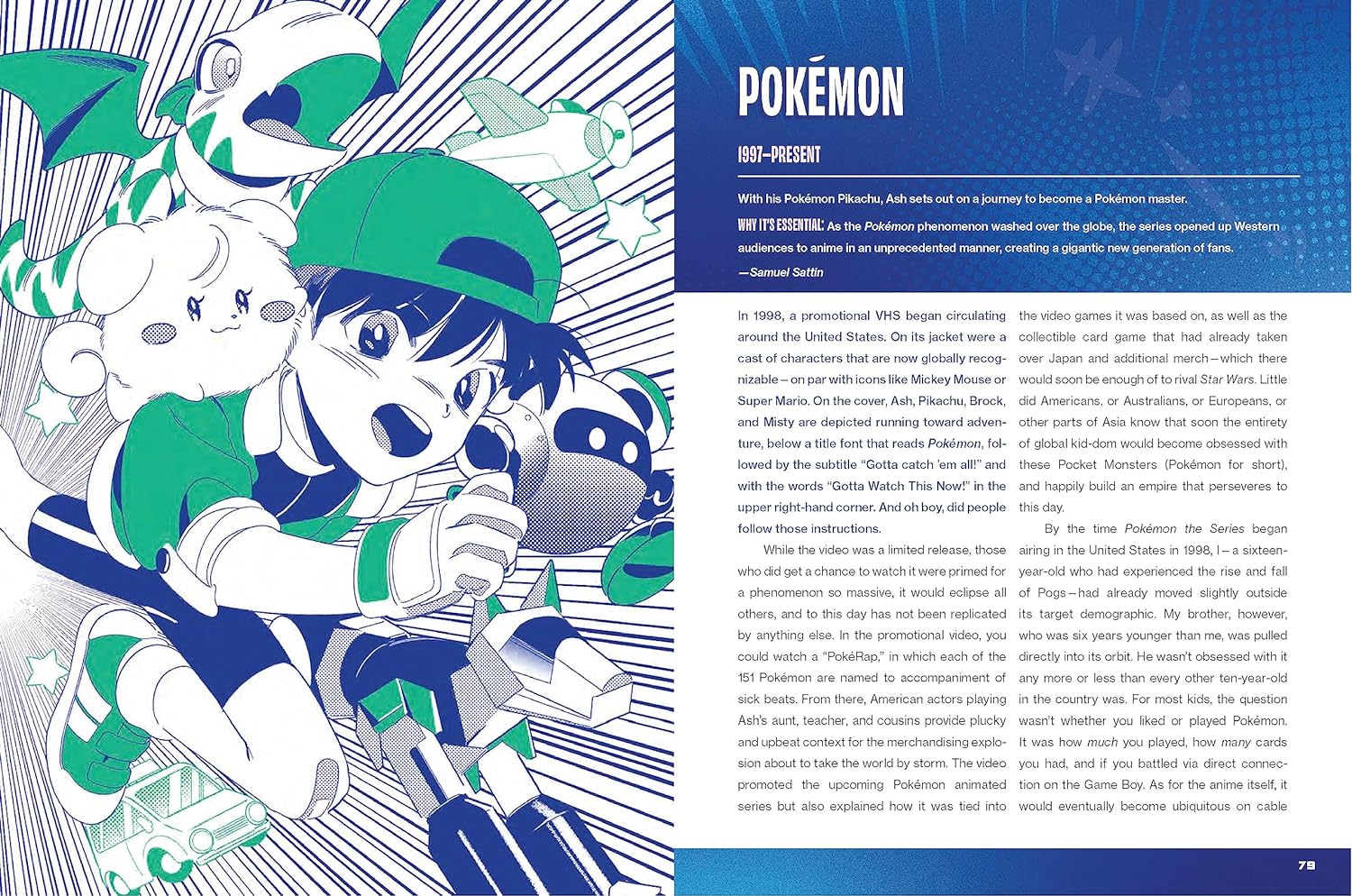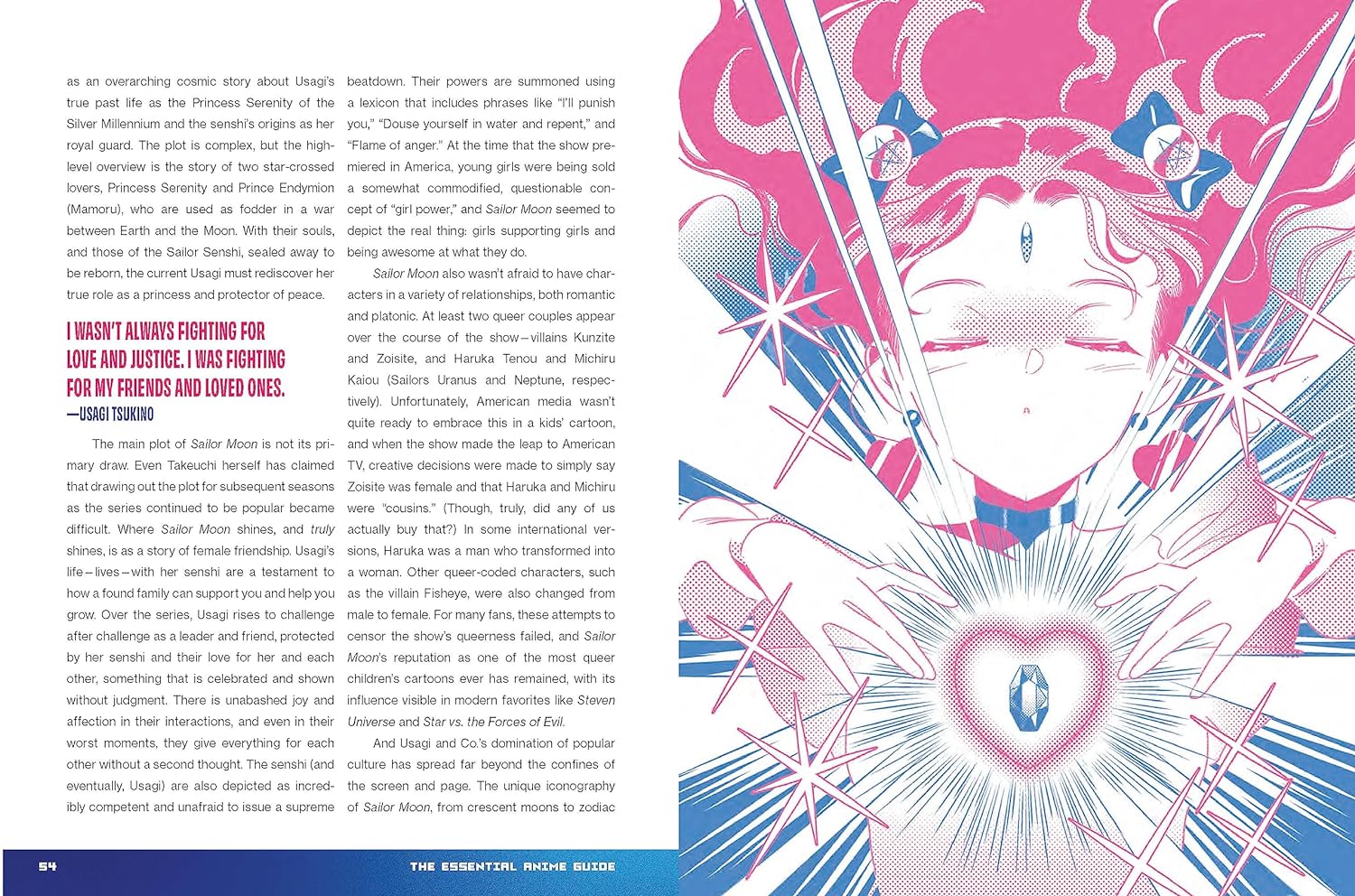If someone asked you what a must-watch anime was, how would you respond? How objective would you be and what would you take into account? Most of us have a list of titles that we give to new anime fans we encounter. Shows on these lists depend on what we like and consider good, in alignment with our personal tastes and preferences. Sometimes they are what made us anime fans and sometimes they are things that impressed us or that left a lasting impact on the community as a whole. Combine these three aspects into one and you will get The Essential Anime Guide: 50 Iconic Films, Standout Series, and Cult Masterpieces, a book that takes the most impactful moments from anime history, condenses them into short overviews and explains why they are so meaningful, to the fans but also the writers.
Written by Patrick Macias and Samuel Sattin, with contributions by various anime/manga writers known among the fans of the genre in the West, this book is coming on October 3 and I had a chance to read it early. Although I was a bit skeptical at first, I have to admit that I was impressed, both by the content and the way the book is put together.
Before we get into content, I have to say that I really love physical editions of books and when I’m buying them, I do like to splurge a bit more on something that is beautiful and high quality. This book, its physical edition, falls into that category. Even though it does not have hardcovers, you will be greeted with nice thick paper, both on the covers and the inside. The whole thing is in full color, with lovely illustrations (albeit sometimes unusual placements), different color schemes for different chapters, decent editing, and the wonderful new-book smell (that I am assuming comes from the color printing). It simply feels luxurious for something that, as I said, is a paperback.
How Good of an Anime Guide Is It?
As someone who didn’t grow up in the US in the ’80s and ’90s, I was not all that interested in the early beginnings of anime distribution there. The chapters seemed way too condensed to contain proper insight into the history and I assumed that they would be just a basic overview of things. However, I was wrong.
As the title implies, The Essential Anime Guide: 50 Iconic Films, Standout Series, and Cult Masterpieces covers a total of 50 iconic anime titles from the 1960s to the present day. Each entry includes a brief introduction with a synopsis and an explanation of why that specific title is “essential,” as well as a few pages worth of content dedicated to it. Most times it is a summary of the anime, be it TV or movie format, with a history, relevant names involved in the production, and an explanation of the impact it had in Japan and overseas. Sometimes, the writers will include personal explanations for their reasoning, usually in the form of a short paragraph explaining the connection they have to the title – something that really adds to the charm of the publication.
People who write about anime, especially those who write mainly news-focused content, tend to have a somewhat lackluster knowledge of the history of anime, especially if they never grew up with it. I count myself here: the anime of my childhood were just seen as cartoons and included dubbed versions of The Delightful Moomin Family and Grimm’s Fairy Tale Classics (in all its brutal glory). None of these are mentioned in The Essential Anime Guide and even though I knew the facts about certain titles in it (such as Astro Boy) reading this from cover to cover really helped me not only learn more about the topic but also put together an idea of a slow cultural revolution that slowly took over the North America in the final two decades of the 20th century.
The list of the titles chosen for the book is pretty solid: it starts with Astro Boy and ends with Demon Slayer: Kimetsu no Yaiba. The reader gets taken on a journey that starts with the early days of anime culture that encompasses Lupin, Mobile Suit Gundam, Macross, and more; then we enter the golden sci-fi era with titles such as Akira, Neon Genesis Evangelion and Ghost in the Shell, and then it’s time for harem beginnings and the ever-popular shonen that takes the form of Dragon Ball Z in the 90s. Pokémon is, of course, included and so is Sailor Moon. What is interesting about these older titles is that there is often a difference between how well they perform in Japan and how well they are received overseas. The first half of the book does a great job of explaining that while taking into account the problems that both the production and the licensors overseas faced.
As we get farther into the 21st century, the genres become more diverse, ranging from traditional shonen to series like Nana, FLCL, The Ouran High School Host Club, Puella Magi Madoka Magica, Yuri on Ice!!!, Mob Psycho 100, and so on. There is a distinct lack of isekai titles, which is a somewhat surprising development, but a clear message that quantity doesn’t mean quality. Sword Art Online is, however, highlighted as a title that heavily influenced the genre.
Some things I expected to find, like Satoshi Kon’s Perfect Blue, are missing but the authors do a good job of explaining why in the introduction interview – as Kon had multiple influential works they picked one that they felt was the most meaningful and encompassing. A similar situation is with Ghibli’s titles, Princess Mononoke was included for its influence. I have to say my heart was filled with joy when I saw In This Corner of the World in the table of contents: this movie will forever remain one of MAPPA’s best adaptations and the story it adapts is so heartfelt and meaningful, as Deb Aoki masterfully explained.
One more thing that I need to praise is Macias’ Attack on Titan chapter: not too long, but to the point.
Should You Check Out The Essential Anime Guide?
With this guide, you definitely need to ask yourself whether you are the right audience for it. If you are truly passionate about the history of animation in Japan, this could be a nice little addition to your knowledge base but do keep in mind that it doesn’t go in too deep. However, if you are looking for a nice addition to your collection or even a gift for someone, then this might be a perfect choice.
The writing is simple, but can easily catch your attention and won’t hog all of your brain cells with overly complicated explanations, making it acceptable even for newcomers to the genre. As I said, I can see this being a perfect gift, and at a $24.99 price point, it won’t break your bank either (the e-book edition is $12.99, but I do feel the physical touch adds to the experience here).
Overall, The Essential Anime Guide: 50 Iconic Films, Standout Series, and Cult Masterpieces is a culmination of long careers driven by a pure love for anime. Patrick Macias is the editor-in-chief at Otaku USA magazine and a co-founding editor of Crunchyroll News, while Samuel Sattin is a writer with decades of experience in all things “nerd.” The other contributors are also names you will know, especially if you follow anime news and review content. What’s important to note is that while their opinions might not be something we essentially agree with all the time these people still played a monumental role in bringing anime closer to the new, young viewers, thus expanding the English-speaking community to a size they probably never could have imagined.
© 2023 Running Press; Cover © Hachette Book Group; Cover and interior illustrations © 2023 by DenQ
Anime Corner received a review copy of this book for review purposes, courtesy of the Running Press/Hachette Book Group.




Participate In Discussions